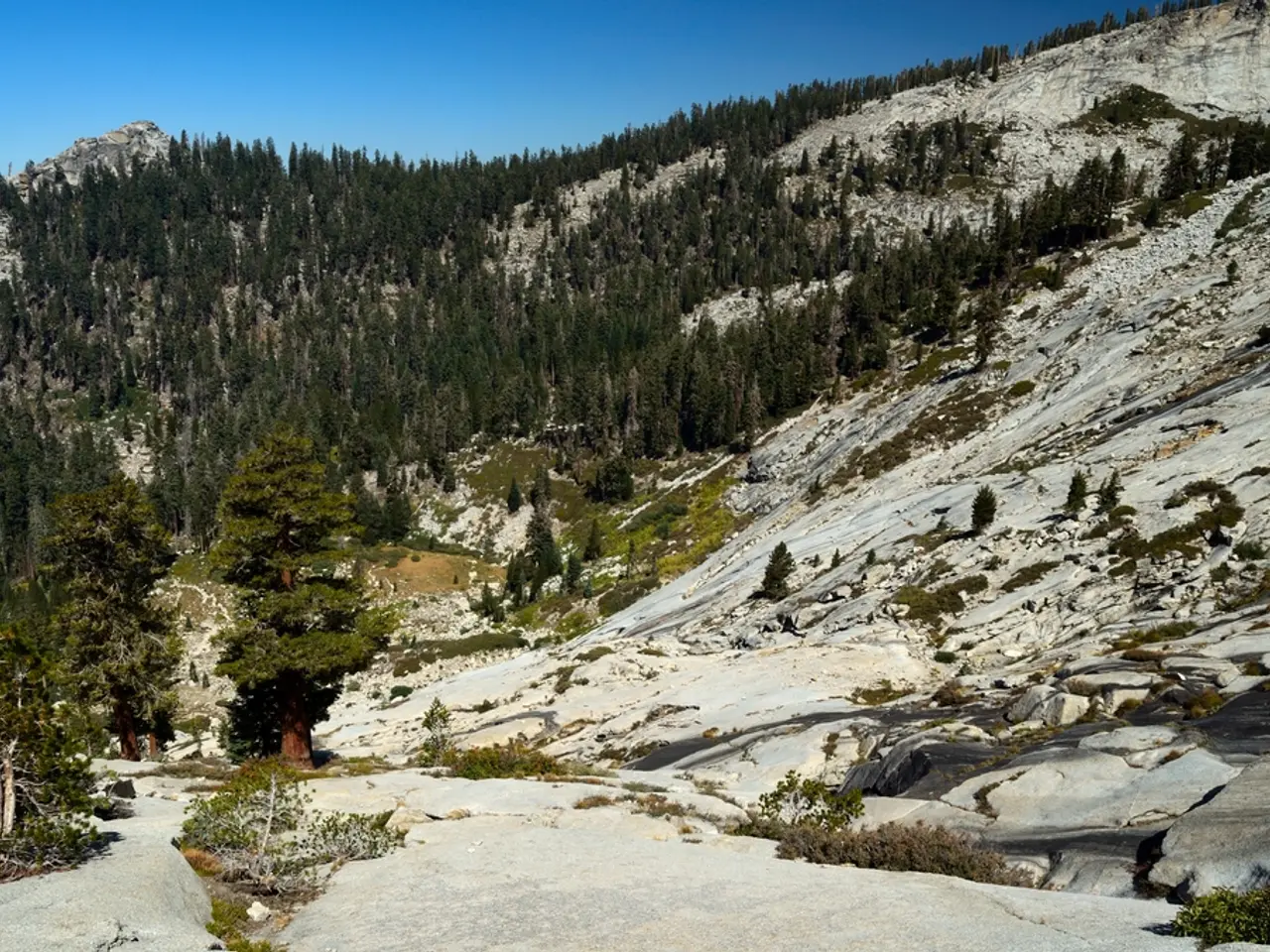Adjusting to Climate Variations in the Pacific Northwest and Alaska Regions
In the face of climate change, several resources and funding opportunities are available to Tribal communities in Alaska, Idaho, Oregon, and Washington. These resources aim to support climate adaptation projects, improve air quality, and address unique issues facing Indigenous communities.
One such resource is the Affiliated Tribes of Northwest Indians (ATNI) Climate Change Program, serving as a hub for Tribal climate change efforts and a clearinghouse for information on inter-Tribal climate change initiatives. ATNI's program also acts as a repository for the Tribal Climate Adaptation Guidebook, which supports proactive adaptation to climate change.
The University of Washington Climate Impacts Group - Tribal Climate Tool offers visual climate change projections and climate change summaries at the scale of Tribal decision-making for Pacific Northwest and Great Basin Tribes. The tool includes maps and graphs of precipitation, temperature, stream, snow, and fire projections, providing valuable insights for climate adaptation planning.
The Institute of Tribal Environmental Professionals (ITEP) Tribes & Climate Change Program offers resources to Tribal environmental and natural resource professionals working on climate change issues. ITEP's resources aim to enhance the capacity of Tribal professionals to plan and implement climate adaptation projects effectively.
The Regional Resilience Toolkit is a coordinated approach to disaster planning for multiple jurisdictions, levels of government, and non-governmental partners. This toolkit is essential for Tribal Nations in preparing for and recovering from natural disasters exacerbated by climate change, such as floods and wildfires.
The Environmental Finance Center at the Rural Community Assistance Corporation offers financial tools to support financially sustainable infrastructure solutions and evaluate the financial and cultural impacts of adaptation and relocation. The Center also provides infrastructure technical assistance, training, research, and financial tools to increase capacity and leadership development for communities, Tribes, and governments.
One Tribal Nation taking action against climate change is the Quinault Indian Nation in Washington State, which is planning for relocation due to climate change.
EPA Region 10 supports climate adaptation in the region with emergency preparedness websites, vulnerability assessments, climate adaptation planning, and community education. The EPA's Tribal Air and Climate Resources for Region 10 provide grants and resources to improve air quality and address climate-related health issues in Tribal communities. Tools include portable air monitoring devices, Federal Air Rules for Reservations, burn bans, and air quality alert programs tailored for Tribal areas.
The EPA Region 10 Indian Environmental General Assistance Program (GAP) provides grants to tribes and tribal consortia in the states to support environmental capacity building and projects. The program includes guidance for Tribal Councils on managing grants and developing strategic environmental plans to align with Tribal environmental goals.
FEMA Region 10 offers disaster resilience and mitigation grants, risk mapping, assessment, and planning resources specifically geared toward Tribal Nations in these states. These resources are critical to climate adaptation by helping tribes prepare for and recover from natural disasters exacerbated by climate change.
Broader federal funding opportunities, such as those under the Inflation Reduction Act, support climate adaptation and resilience projects that may be accessible to Tribal governments as eligible entities. For example, the Act includes $5 billion for Climate Pollution Reduction Grants and other programs focused on energy efficiency, wildfire mitigation, and resilient infrastructure, which tribal governments in these states can apply for.
Additional resources include coordinated programs with water districts, conservation associations, and other local government units that often partner with Tribal communities for natural resource conservation and climate adaptation, sometimes supported by combined grant programs worth billions nationwide.
The Climate Change Adaptation Resource Center (ARC-X) helps local governments obtain tailored information for effective climate change service delivery. The Local Environmental Observer Network (LEO) uses community member posts of unusual environmental events to create public maps, while the Decision Integration for Strong Communities Tool (DISC) aids in community decision making by providing access to EPA tools and websites.
In summary, tribes in Alaska, Idaho, Oregon, and Washington can access EPA Region 10 Tribal air and environmental grants, FEMA Region 10 disaster resilience programs, and federal climate funding opportunities under legislation like the Inflation Reduction Act. Collaborative tools such as EPA's environmental plans and monitoring equipment enhance their capacity to plan and implement climate adaptation projects effectively.
- The Affiliated Tribes of Northwest Indians (ATNI) Climate Change Program, with its role as a hub for Tribal climate change efforts, collates scientific insights vital for environmental-science-driven climate-change adaptations in Tribal communities.
- The Environmental Finance Center at the Rural Community Assistance Corporation, offering financial tools to support sustainable infrastructure solutions, bridges the gap between finance and climate adaptation, enhancing the resilience of Tribal communities in the face of climate change.




